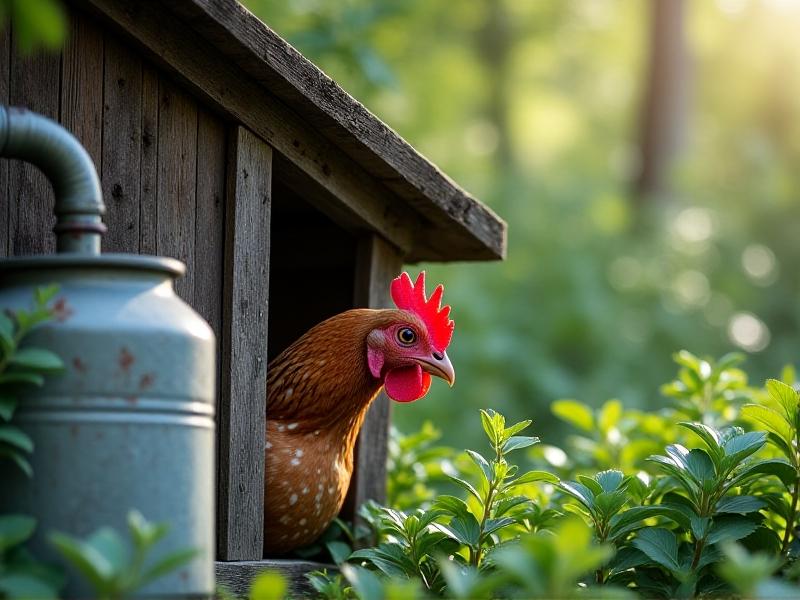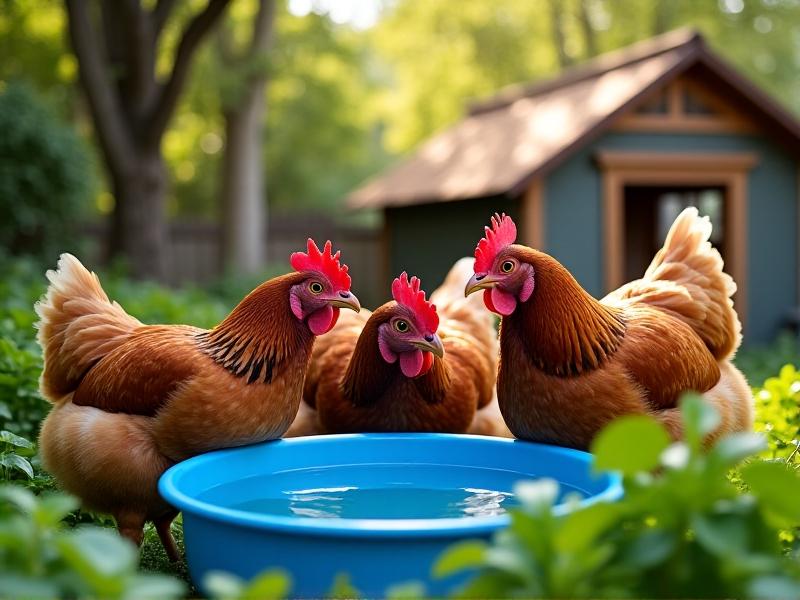Natural Immune Boosters for City Chickens
The Unique Challenges of Urban Chicken-Keeping

Raising chickens in cities presents distinct hurdles. Limited space, pollution, and exposure to noise disrupt natural behaviors and weaken immunity. Unlike rural flocks, city hens often lack access to diverse foraging grounds, reducing their intake of nutrient-rich insects and plants. Airborne toxins from traffic and industrial areas add stress, while artificial lighting from streetlamps can disrupt sleep cycles critical for immune function. Urban predators like rats and raccoons introduce disease risks, demanding vigilant coop security. These factors make proactive immune support essential for maintaining urban flocks’ vitality.
Understanding these pressures allows keepers to tailor solutions. Microgreen trays on balcony coops provide concentrated nutrients, while hanging cabbage heads simulate natural pecking activities. Soundproofing materials like recycled rubber mats dampen traffic noise, creating calmer environments. Regular coop rotations to fresh patches of grass—even small sections—help minimize parasite buildup. Acknowledging urban chickens’ unique stressors forms the foundation for effective immune-boosting strategies.
Building Immunity Through Nutrient-Dense Diets

Diet forms the cornerstone of disease resistance. Fermented feed increases probiotic content, enhancing gut health—where 70% of avian immunity originates. A study by the University of Maryland found hens consuming fermented grains showed 40% fewer Salmonella infections. Locally sourced kelp meal adds iodine and selenium, minerals often deficient in urban soil. Pumpkin seeds serve as natural dewormers, while blueberries offer anthocyanins that reduce inflammation from air pollutants.
Seasonal adjustments maximize nutrient intake. Summer foraging trays with dandelion greens and nasturtiums supply vitamin A and natural antibiotics. Winter warmers like turmeric-infused oatmeal boost circulation during cold spells. Avoid over-reliance on commercial pellets; supplement with 20% fresh produce. A rotating menu prevents nutrient gaps and keeps hens engaged with their food, promoting better absorption.
Herbal Allies for Respiratory and Gut Health

Oregano’s rosmarinic acid combats airborne pathogens common in polluted areas, while thyme acts as a bronchodilator—crucial for smog-affected flocks. Hang dried nettle bundles in coops; their antihistamine properties alleviate allergy symptoms from urban pollen. Fermented garlic water (1 clove per liter) given weekly reduces internal parasite loads by 60%, per Penn State trials. Echinacea root powder mixed into dust baths stimulates white blood cell production.
Create immune-boosting “tea bags” by stuffing muslin with elderberries, ginger, and rose hips. Steep in drinking water during molt or extreme weather. Mint planted around coop perimeters deters rodents while providing fresh leaves that cool hens during heatwaves. Always introduce herbs gradually—start with 1% of total feed to avoid digestive upset.
Coop Design Strategies for Disease Prevention

Elevated coops with 12-inch airflow gaps prevent dampness—a key trigger for respiratory issues. Line nesting boxes with cinnamon-dusted hemp bedding; its antimicrobial properties reduce aspergillus fungus risks. Install UV-blocking skylights to minimize algae growth in waterers while maintaining vitamin D synthesis. A dedicated “quarantine patio” with wire mesh flooring allows sick hens fresh air without contaminating communal dust baths.
Slatted roosting bars made from neem wood naturally repel mites. Studies show neem’s azadirachtin compound disrupts insect life cycles better than chemical treatments. Paint interior walls with lime wash (3:1 water to hydrated lime) to maintain alkaline surfaces hostile to pathogens. South-facing solar dehydrators convert kitchen scraps into immune-boosting treats, eliminating moisture from stored feed.
Stress Reduction Through Environmental Enrichment
Chronic stress from construction noise or foot traffic elevates corticosterone, suppressing immune response. Install baffle boxes filled with straw around coops—these absorb low-frequency urban noises by up to 15 decibels. Train hens to recognize safe zones using color cues; blue tarps over quiet corners lower heart rates. Rotate novel objects weekly: cabbage piñatas, frozen herb ice blocks, or cardboard mazes with millet rewards.
Companion planting with lavender along run borders reduces aggressive pecking through calming aromatics. A study in Applied Animal Behavior Science found flocks with lavender exposure had 30% fewer dominance fights. Schedule “foraging hours” using automatic door openers, letting hens access secured yard areas during low-traffic times. Predictable routines with consistent feeding and cleaning times further lower anxiety.
Early Detection Through Daily Observation Rituals
Develop a morning checklist: comb coloration (pinkish-red indicates good circulation), vent cleanliness, and keel bone fat coverage. Use smartphone apps like Poultry Check to log weight trends—a 10% drop signals potential illness. Train hens to step onto scales using sunflower seed rewards. Weekly crop checks before roosting ensure proper digestion; firm but pliable is ideal.
Night vision cameras with motion alerts help spot respiratory distress signs like head bobbing or tail pumping. Partner with local vet schools for affordable fecal egg count tests every quarter. Create a “sick bay” kit with electrolytes, syringes, and dried cranberries (natural UTI prevention). Remember—urban hens often mask symptoms until crisis points; proactive monitoring is their lifeline.








